India being a land of diversity is filled with the fragrance of religions. India is known for its festivals and festivals are a pride and treasure of our country. People of different religion, caste, creed celebrate the festival of Diwali with the feeling of brotherhood and love. Diwali or Deepavali (Deepawali) is one among the most important festivals of India. ‘Deepa’ means lamp and ‘avali’ means row. The first thing that strikes our mind when we hear the word Deepavali or Diwali is – “the festival of lights”.
Celebration of Deepavali has specific reasons and beliefs which are strongly believed by different regions of our country. In north India, Diwali is celebrated as Rama’s return to Ayodhya after the defeat of Ravana. In south India, Deepavali is celebrated as Lord Krishna defeated the demon Narakasura. And in western India, Deepavali is celebrated as it marks the day when Lord Vishnu sent demon Bali to rule the nether world. Though Deepavali or Diwali is called by different names in different regions of our country, the major reason behind the celebration is – the end of evil.
Diwali is a five day festival that is filled with joy, wealth, happiness, love, share and care. It includes Lord Ganesha and Goddess Lakshmi’s pooja, lighting of lamps, bursting of fireworks, good food, devotion and help for the needy. Though Diwali is beyond these rituals, it has a deep meaning and reason behind the celebration, joy and happiness.
Days of Deepavali
Deepavali comes in the month of October or early November every year. It falls on the 15th day of Karthika masa/ masam. 5 days of Diwali or Deepavali are –
1. Govatsa Dwadashi /‘Nandini vrat’/ ‘Vasu Baras’
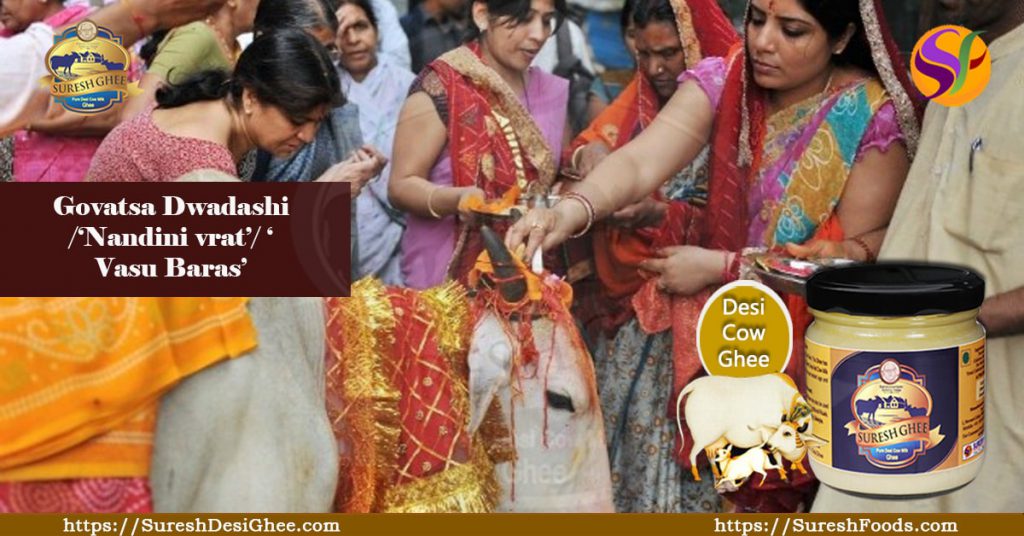
Govatsa Dwadashi is performed before Deepavali to protect the environment from the instability generated during Diwali. During Deepavali the flow of energy is activated in the environment and as a result the environment is prone to harmful energies which causes instability in the environment. Thus, to save the environment from the harmful energies Govatsa Dwadashi is celebrated.
On the day of Govatsa Dwadashi through the manifest frequencies of Sri Vishnu the stability is maintained in the environment.
People in the rural regions worship cows because cows are the main source of income for the villagers. It is also believed that Goddess Lakshmi arrives in the form of a cow. Thus, worshipping the Kamadhenu a day before Diwali is to seek the blessings of god Lakshmi and Kamadhenu.
Read our blog – Why Govatsa Dwadashi performed before Diwali?
2. Dhanteras/ Dhanatrayodashi or Dhanvantari Trayodashi
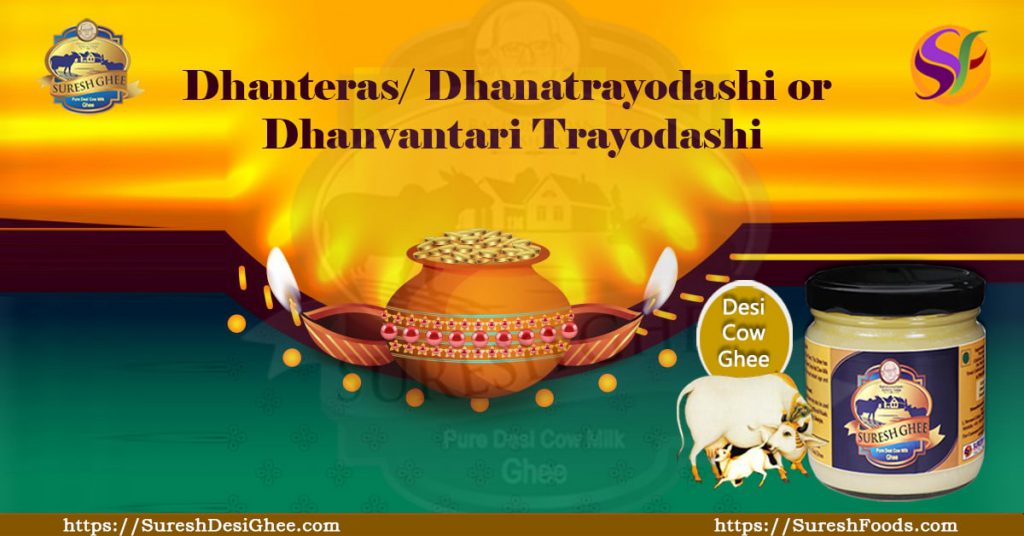
Dhanteras is marked as the first day of Deepavali and people purchase precious metals like gold, silver and precious gemstones etc. It is believed that buying precious metals on this day signifies prosperity and wealth throughout the year. Goddess Lakshmi, Lord Ganesha and Lord Kubera are worshipped with utmost devotion.
Read our blog – How to celebrate Dhanteras?
3. Naraka Chaturdashi/ Choti Diwali/ Kali Chaudas/ Roop Chaudas
Naraka Chaturdashi is the second day of Diwali which denotes the day of knowledge. People wake up early in the morning, apply oil and have a traditional bath or Abhyang snan. They wear new clothes, offer pooja to God and have delicious delights with their family and relatives. In the evening people burst fireworks, make colorful rangolis and light diyas all around the premises of their homes.
4. Deepavali
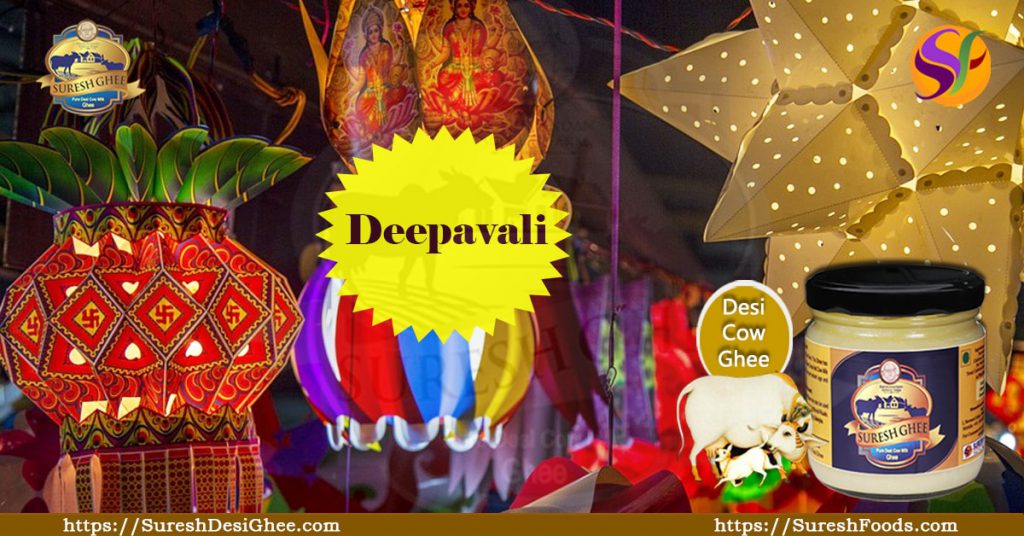
Deepavali is the third and most important day of the festival which denotes the day of lights and end of evil. Lakshmi Pooja is the major part of this day as it is believed that Goddess Lakshmi arrives on this day during the pooja. Lamps are lit all around the house and the house is kept clean in order to welcome her. Businessmen/ Businesswomen close their accounts and start a new accounts book from this day. They perform Lakshmi pooja in their shops and give sweets to everyone after the pooja. They also donate the needy ones with essentials.
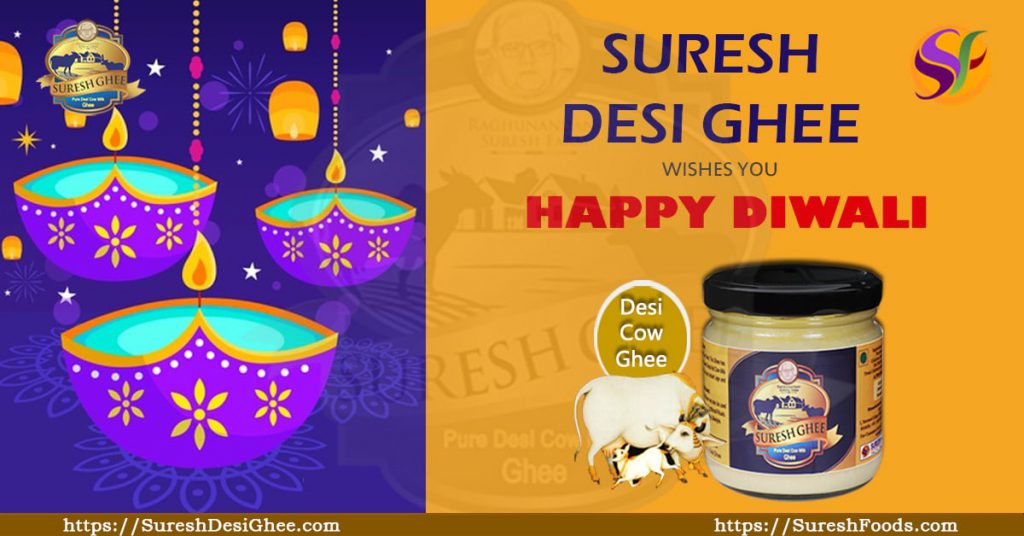
Relatives, friends and neighbours are invited for dinner and delicious delicacies are prepared in everyone’s homes. To try some easy and mouth-watering collection of Diwali sweets refer our blog – Diwali Recipes | Collections of Diwali Sweets Recipes. You can also buy desi ghee at Suresh Foods. To buy pure grass-fed cow ghee visit our website https://sureshfoods.com/ to know more.
5. Annakut
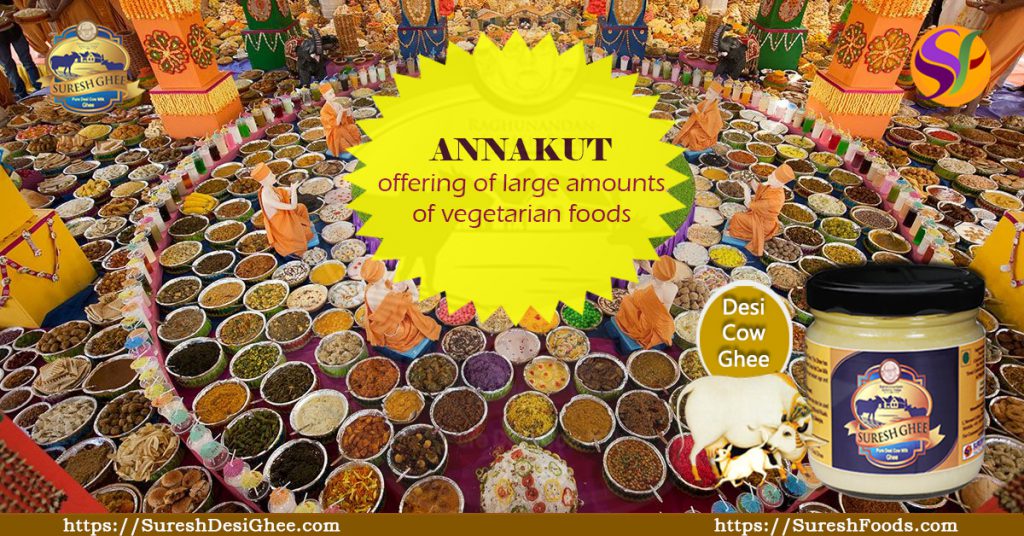
Annakut is the fourth day of Deepavali which is the Hindu New year. Devotees prepare large quantities of food and are offered to their devotees. It is believed that on this day, Lord Krishna saved the people of Gokul from the wrath of Lord Indra by lifting up the Govardhan hill with his little finger. Thus, preparation of mountain of food is a way of thanking God for protecting and blessing us.
6. Bhai dooj/Bhau Beej/ Bhai Tika/ Bhau Deej
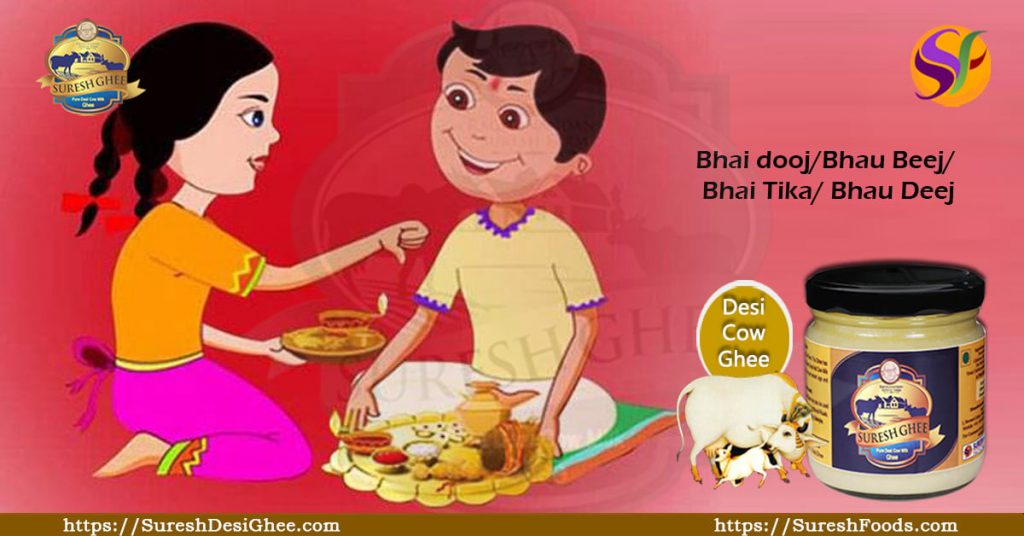
Bhai dooj is the last day of Deepavali which is celebrated as a day of love between the siblings. On this day sisters pray for the long life and happiness of their brothers. After worshiping the God, sisters do aarti to their brothers, give them sweets, exchange gifts with siblings and take the blessing of the elders in the house.
Every festival celebrated during Diwali has its own reasons and beliefs behind the celebration.
History of Deepavali
Deepavali or Diwali is celebrated in from thousands of years. There may be various beliefs when it comes to the celebration of Deepavali but the most believed reason or belief behind Deepavali is the Ramayana.
Ramayana is the Hindu epic written by Valmiki. The Ramayana is the story of Rama and his challenges during the Vanvas. According to the Ramayana, Lord Rama was sent from Ayodhya to the forest for 14 years by his father, King Dasharatha. Rama, his wife Sita and brother Lakshmana went on exile to the forest. There Sita was abducted by King Ravana, the demon king of Lanka. Rama fights against Ravana with the help of Lakshmana and Hanuman and rescues his wife. He then returns to Ayodhya after fourteen years by giving an end to the evil. When Rama, Sita and Lakshmana, Hanuman returns to Ayodhya, the villagers welcome them by lighting lamps, bursting crackers and decorating the entire village.
Another well known story is related to the story of Mahabharata. The Mahabharata is the story of the five royal brothers – the Pandavas. The Pandavas and Kauravas played the game of gambling and Pandavas were defeated by the Kauravas in this game. As the rule imposed on the loser, the Pandavas had to serve for a time period of 13 years in exile. They had to live their lives in disguise for 13 years without letting anyone know their true identity. After 13 years when the Pandavas returned Hastinapura, the common people lit lamps and welcomed them back with atmost love and care.
Another story related to the celebration of Diwali is the story of goddess Lakshmi. On the day of Diwali, it is believed that goddess Lakshmi rose up from the ocean. When the gods and demons lived their lives, they had to die one day and were not immortal. But they wanted to live forever and in the seek of Amrita i.e, the nectar of immortality they churned the ocean. During this time, goddess Lakshmi rose up from the ocean with other divine objects as well. That very night, Lord Vishnu married her. Thus, Diwali is believed to be the birth of goddess Lakshmi and her marriage. On the occasion of the divine day it is believed that the lamps were lit all over.
Significance of Deepavali
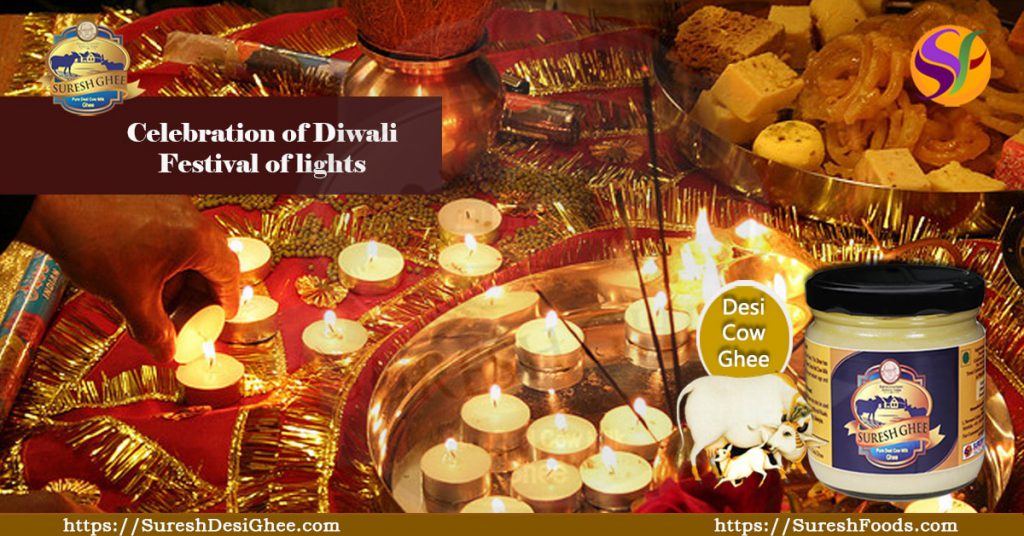
There are several other beliefs, stories or myths in the Hindu Mythology. But the end of all, Deepavali is celebrated with the significance of “End of Evil” or “Good over Evil”. Lighting lamps denotes the meaning of ‘darkness to light’ and bursting crackers denotes the meaning of ‘burning evil or negative vibes’. It is also believed that lighting lamps around the house protects the house from evil or negative vibes from entering into the house. Lastly, Deepavali is also a festival of hope, joy and happiness which brings in a smile every year with the hope of prosperity, peace of mind, happiness and wealth.
Conclusion
Just the mere mention of the festival could bring in smiles on your faces. Thus, celebrate the festival with your loved ones with the hope of togetherness, happiness and prosperity. May the good win over the evil and let all your problems come to an end with a solution. Prepare delicious delights and enjoy your Diwali with your loved ones. Last but not the least, do not forget to help the needy because you could be a reason behind their smile and also a ray of hope from the dark.
We wish you a Happy and Prosperous Diwali from Suresh Foods!!

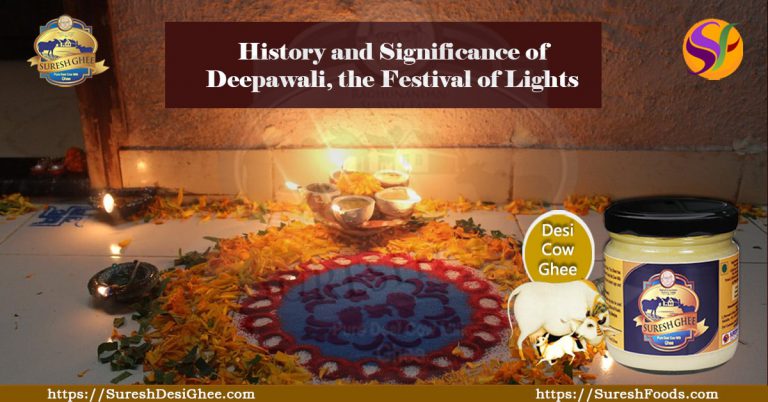
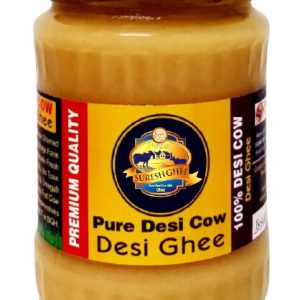
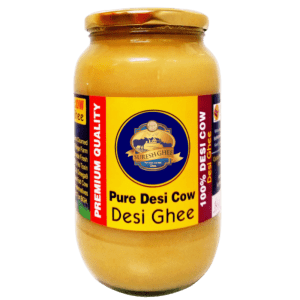
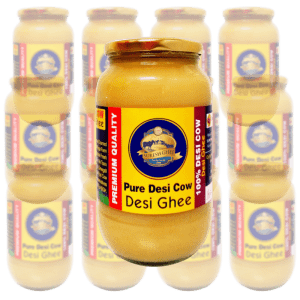
 WhatsApp us
WhatsApp us
Naveen m...